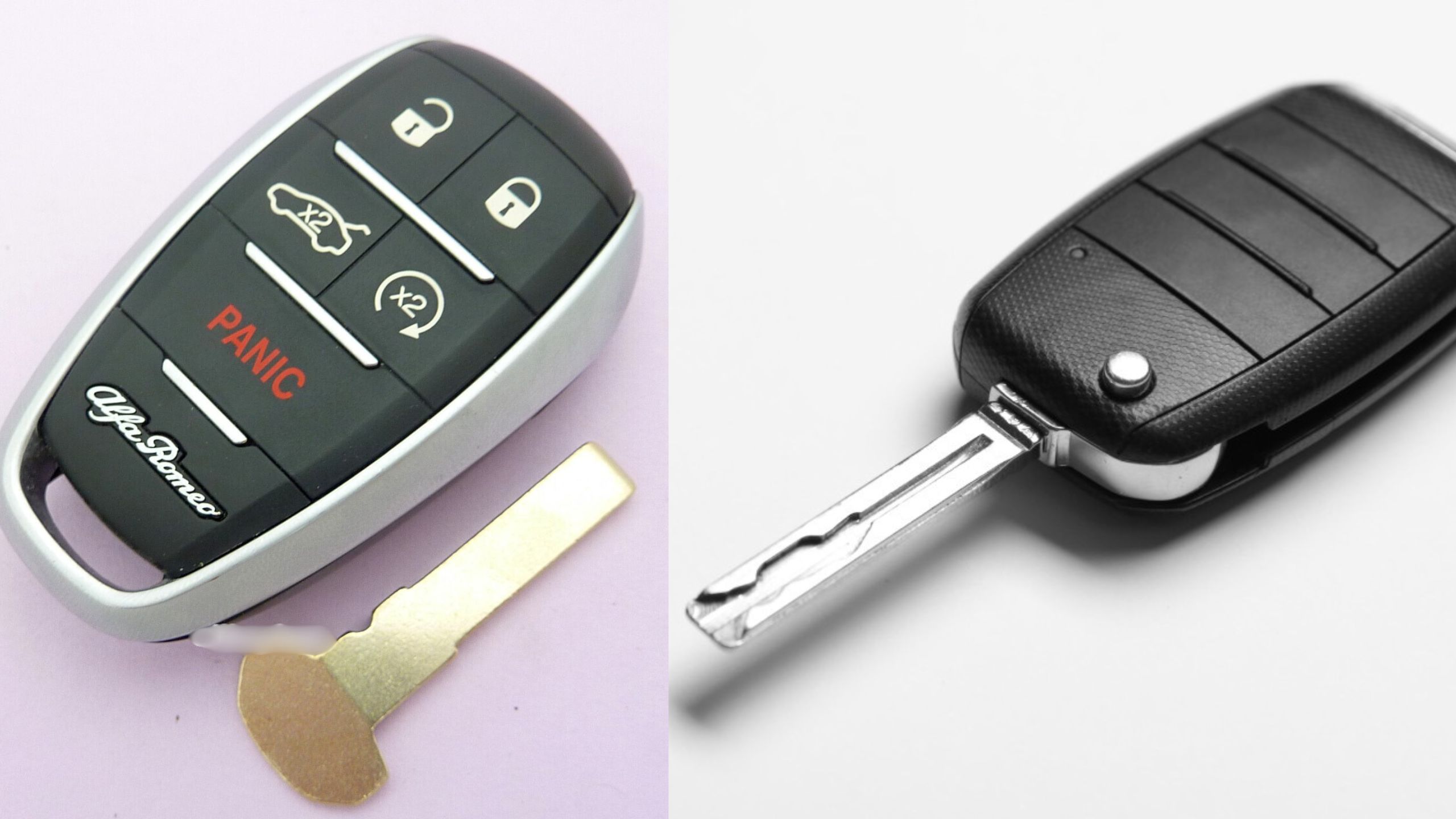In our increasingly technology-dependent world, the humble car key has evolved dramatically from simple mechanical devices to sophisticated electronic systems.
These modern marvels offer convenience and enhanced security, but not all key systems are created equal. The difference between a reliable key system and an unreliable one can mean the difference between starting your day smoothly or finding yourself stranded in a parking lot.
This comprehensive guide examines five car key systems renowned for their dependability and five notorious for leaving drivers frustrated and immobilized.
Understanding these systems’ strengths and weaknesses can inform your next vehicle purchase decision or help you better prepare for potential issues with your current key system.
We’ll explore the technology behind each system, examine their failure points, and provide practical advice for prevention and troubleshooting. From traditional mechanical keys to the latest smartphone-integrated technologies, this analysis covers the full spectrum of automotive access and ignition systems in today’s market.
5 Car Key Systems That Rarely Fail
These exceptionally reliable key systems feature robust electronics and thoughtful redundancies that ensure consistent vehicle access and starting capability through years of daily use.
Their weatherproof construction and efficient battery management extend fob life far beyond industry averages, preventing the common dead-battery scenarios that strand users of lesser systems.
From intelligent backup measures like hidden mechanical keys to extended-range wireless communication, these well-engineered systems maintain functionality even when electronic components begin to age.
Owners report completing entire vehicle lifespans without experiencing key-related failures, an impressive achievement that eliminates a surprisingly common source of modern vehicle headaches.
1. Traditional Mechanical Keys
The simplest solution often proves the most reliable. Traditional mechanical keys have been used in automobiles for over a century, and their basic design has remained relatively unchanged for good reason.
These keys operate on straightforward principles: a physical key with specific cut patterns that corresponds to the tumblers in the ignition cylinder.
What makes mechanical keys so dependable is their lack of electronic components. With no batteries to die, no circuits to short out, and no software to glitch, a well-made mechanical key can last for decades with minimal maintenance.
The only electronic aspect of these systems might be an optional immobilizer chip, which typically has a very long lifespan. The durability of mechanical keys is remarkable. They can withstand extreme temperatures, moisture, and even moderate physical abuse.
A traditional key can still function after being submerged in water or exposed to freezing temperatures that would render electronic systems inoperable. This resilience makes them particularly valuable in harsh environments or emergencies.
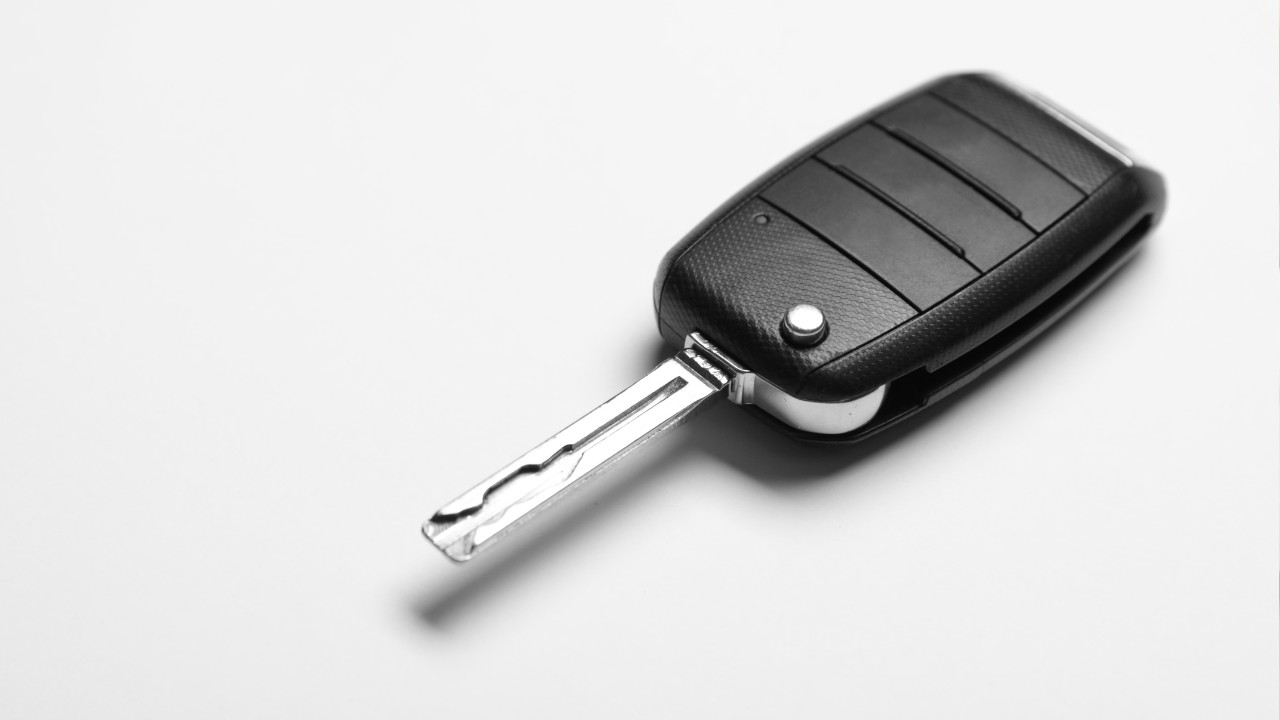
Maintenance for mechanical keys is straightforward. Occasional lubrication of the lock cylinder prevents wear and ensures smooth operation. If issues do arise, they tend to develop gradually, giving owners ample warning before complete failure occurs.
A key that begins to stick or requires jiggling to work properly signals that attention is needed, but rarely results in a no-start situation without prior warning.
Replacement is also simple and affordable. Most locksmiths can cut a new key for under $50, and the process takes minutes rather than hours or days that might be required for programming sophisticated electronic keys.
Even in remote areas, finding a locksmith who can duplicate a mechanical key is relatively easy compared to locating specialized electronic key programming services.
The primary drawbacks of mechanical keys lower security against theft and less convenience have little bearing on their reliability. For drivers who prioritize dependability over cutting-edge features, vehicles that retain traditional mechanical key systems offer peace of mind that comes from proven, time-tested technology.
2. Honda Smart Key Systems
Honda has established a reputation for engineering key systems that strike an impressive balance between advanced technology and exceptional reliability.
Their smart key systems, found in models like the Accord, CR-V, and Civic, consistently receive high marks from owners and technicians alike for their dependability and thoughtful design.
What sets Honda’s systems apart is their redundancy and fail-safe engineering. Even when the smart key’s battery begins to weaken, the system provides clear warnings well in advance. If the battery dies, Honda has implemented multiple backup methods to start the vehicle.
Owners can hold the dead key fob directly against the start button, where an emergency RFID chip that requires no battery power can still communicate with the vehicle’s immobilizer system.
Honda also incorporates mechanical backup systems in most of their smart keys. A hidden physical key is tucked inside the fob that can unlock the doors manually if the electronic unlock function fails.
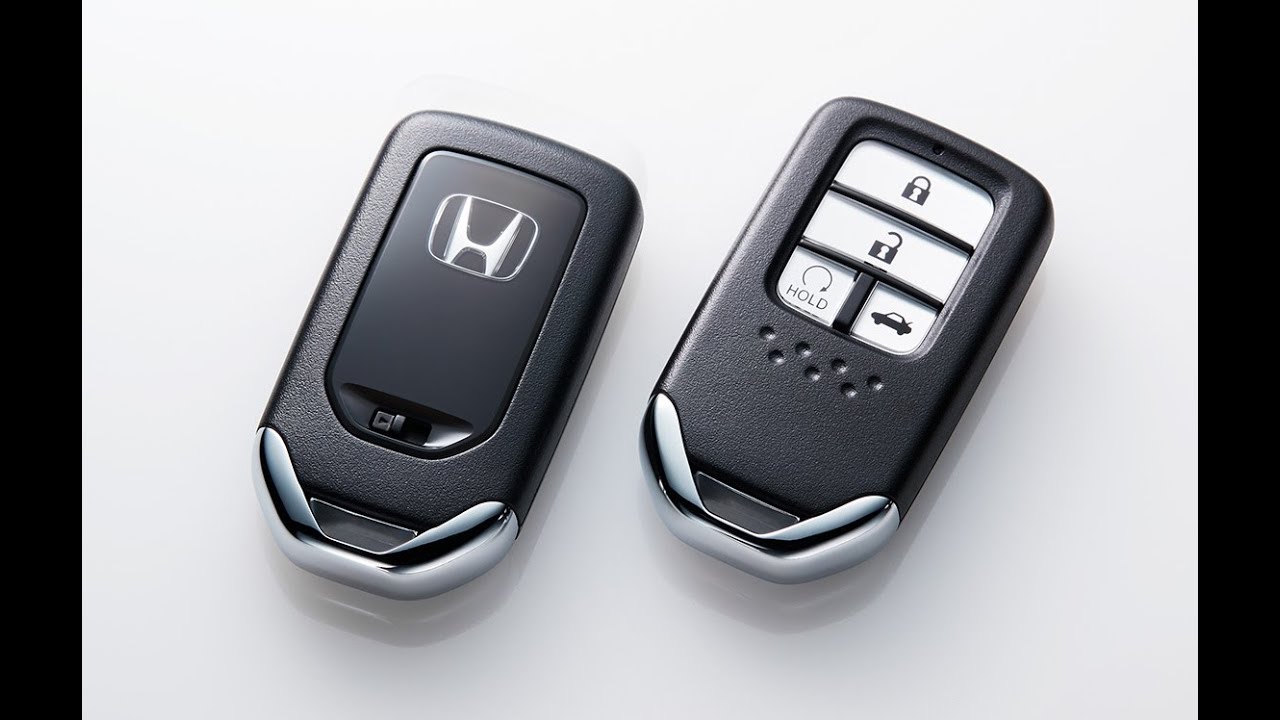
This hybrid approach provides the convenience of keyless entry and push-button start while maintaining the reliability of traditional mechanical systems as a backup.
The build quality of Honda’s key fobs contributes significantly to their reliability. The casings are durable and water-resistant, protecting the sensitive electronics inside.
The internal components are well-secured to prevent damage from drops or impacts. Even the buttons are designed with longevity in mind, using high-quality switches that maintain their tactile response even after years of use.
Honda’s thoughtful approach extends to their dealer network and service protocols. Their diagnostic systems can quickly identify and resolve key-related issues, and replacement keys are generally more affordable and easier to program than those from luxury brands.
Many Honda dealerships keep common key fobs in stock, reducing wait times when replacement is necessary. While no electronic system is entirely immune to failure, Honda’s smart key systems stand out for their engineering approach that prioritizes reliability and driver convenience even in failure scenarios.
Their multi-layered redundancy means that total system failure is extremely rare, making them a standout choice for drivers who want modern convenience without sacrificing dependability.
3. Toyota Smart Key System
Toyota’s reputation for reliability extends to their smart key systems, which have proven themselves through millions of operational hours across their vehicle lineup.
From the affordable Corolla to the premium Lexus models, Toyota has refined their smart key technology to be among the most dependable in the automotive industry.
The cornerstone of Toyota’s smart key reliability is their conservative approach to innovation. Rather than rushing to implement cutting-edge features, Toyota typically waits until technologies are thoroughly tested before incorporating them into production vehicles.
This methodical approach has resulted in key systems that benefit from extensive real-world validation before reaching consumers’ hands. Toyota’s smart keys are engineered with durability as a primary consideration.
The circuit boards are protected by thick, impact-resistant casings that shield the electronics from damage. The internal components are secured to prevent disconnect issues that plague some competitors’ key fobs after drops or impacts.
Even the battery contacts are designed to maintain consistent connections despite vibration and temperature changes. A particularly impressive aspect of Toyota’s system is its exceptional battery life.

While many automotive key fobs require battery replacement every 1-2 years, Toyota’s smart keys often last 3-4 years under normal use. The system is also designed to operate reliably even as the battery approaches the end of its life, with a gradual degradation in range rather than sudden failure.
Like Honda, Toyota incorporates fail-safe measures throughout their smart key design. A manual key is hidden within the fob for emergency access. If the fob’s battery dies, touching it to the start button allows the passive RFID chip to authenticate and start the vehicle.
Toyota’s system also features robust diagnostic capabilities that can identify potential issues before they lead to complete failure. Toyota’s key systems demonstrate exceptional electromagnetic interference resistance, maintaining functionality in environments where other keyless systems might fail.
This reliability extends to extreme weather conditions, with consistent performance reported in both frigid northern winters and scorching desert summers.
While replacement Toyota smart keys aren’t the least expensive on the market, their long-term reliability often makes them more economical over the vehicle’s lifetime.
The reduced likelihood of emergency locksmith calls or towing due to key failure provides both financial savings and peace of mind for Toyota owners.
4. Mechanical Keys with Simple Transponder Chips
The marriage of old-school mechanical keys with basic transponder technology represents one of the most reliable compromises in automotive access systems.
These hybrid keys, commonly found in vehicles from the late 1990s through the 2010s, combine the proven dependability of mechanical keys with just enough electronic security to deter theft without introducing unnecessary complexity.
The transponder chip embedded in these keys is remarkably simple in design and operation. Unlike complex smart keys with multiple features, these transponder chips have one job: to send a specific radio frequency identification code to the vehicle’s immobilizer when near the ignition cylinder.
This simplicity contributes significantly to their reliability, as fewer components can potentially fail. The transponder chips themselves require no battery power, instead drawing energy from the electromagnetic field generated by the vehicle’s ignition system when the key is inserted.
This passive design eliminates battery failure as a potential issue. These chips are typically encapsulated in epoxy or similar protective materials, shielding them from moisture and physical damage.

The mechanical portion of these keys benefits from centuries of locksmithing refinement. The key blades are typically made from durable brass or nickel alloys that resist wear, corrosion, and breaking.
The consistent mechanical interface means that even if the electronic component fails (which is rare), the key will still physically turn in the ignition cylinder, allowing the use of aftermarket bypass methods in emergencies.
Maintenance for these hybrid keys is minimal. With no batteries to replace and robust mechanical components, they typically remain functional for the entire lifespan of the vehicle.
When replacements are needed, they are generally more affordable than fully electronic key fobs, with programming often costing between $50-150 at most dealerships or automotive locksmiths.
The system’s simplicity also means fewer diagnostic challenges when issues do arise. Mechanics and locksmiths can quickly determine whether a problem lies with the key’s transponder chip, the vehicle’s receiver, or the mechanical ignition components.
This straightforward troubleshooting contributes to faster, more reliable repairs compared to more complex electronic systems. For drivers who value reliability above all else, vehicles equipped with these simple transponder keys offer an ideal balance of security and dependability. Their combination of minimal electronics with proven mechanical design creates a key system that rarely leaves owners stranded.
Also Read: 5 CV Joints That Take Abuse And 5 That Split Before 75K
5. Mercedes-Benz FBS4 Smart Key System
While luxury vehicles often prioritize cutting-edge technology over simplicity, Mercedes-Benz’s FBS4 key system (introduced around 2015) stands as a notable exception that achieves both sophistication and exceptional reliability.
This system, found in recent C-Class, E-Class, and S-Class models, represents the culmination of Mercedes’ lessons learned from earlier, less reliable electronic key designs.
The FBS4 system uses advanced encryption and radio frequency technologies but implements them with remarkably robust engineering. The key fobs are constructed with precision German manufacturing, using high-grade materials that resist wear and environmental damage.
The internal circuit boards feature redundant pathways for critical functions and are sealed against moisture intrusion. Mercedes engineered this system with an emphasis on signal stability and interference resistance.
The communication between key and vehicle occurs across multiple frequency bands, allowing the system to automatically switch channels if interference is detected.
This redundancy is particularly valuable in urban environments with dense electromagnetic activity that can disrupt less sophisticated systems. Battery management in the FBS4 system is exceptionally well-designed.
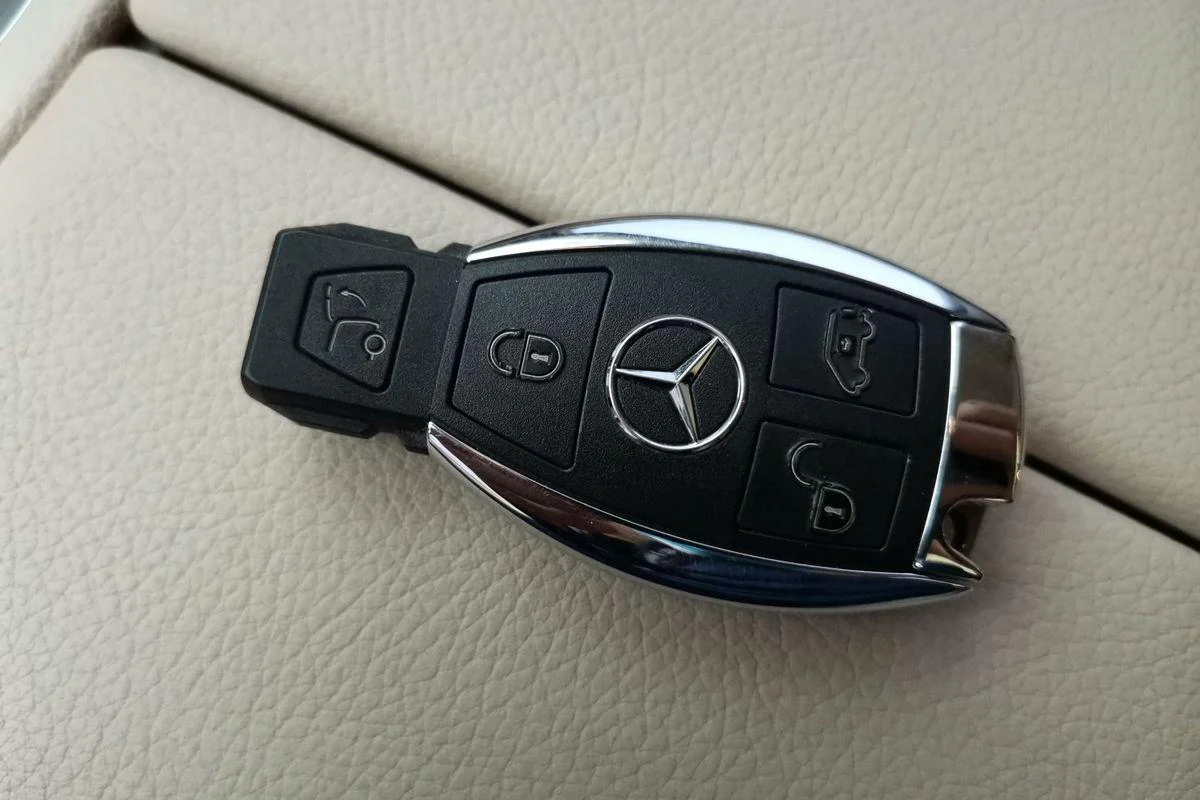
The key fob enters a deep sleep mode when not in use, dramatically extending battery life. When the battery does begin to weaken, the vehicle provides clear warnings through the dashboard display, typically giving owners weeks of notice before replacement becomes necessary.
Even with a depleted battery, the system includes an emergency induction charging feature that can temporarily power the key fob enough to start the vehicle.
Like other premium systems, the Mercedes FBS4 includes multiple backup methods for vehicle access and starting. A concealed mechanical key provides emergency door access, while holding the dead key fob against a specific spot on the steering column allows the passive transponder to authenticate with the vehicle’s immobilizer system.
What truly sets the Mercedes system apart is its self-diagnostic capability. The key regularly performs internal checks and can alert the vehicle to developing issues before they cause a failure.
This predictive maintenance approach minimizes unexpected problems and allows owners to address potential issues during regular service visits rather than experiencing sudden failures.
Though replacement costs for Mercedes keys are among the highest in the industry, the exceptional engineering and reliability of the FBS4 system mean replacements are rarely needed due to failure.
For drivers who value sophisticated technology that doesn’t compromise on dependability, the Mercedes FBS4 system represents one of the most reliable premium key systems available.
5 Car Key Systems That Frequently Leave You Stranded
These problematic access systems feature fragile electronics and questionable design decisions that transform minor component failures into complete vehicle immobilization without warning.
Their overly complex security algorithms and poor error handling create scenarios where slight battery voltage drops or minor signal interference result in cars refusing to recognize their keys.
Owners report developing anxiety-inducing habits like carrying backup fobs and replacement batteries after experiencing the unique helplessness of standing beside their immobilized vehicle with a recognized but mysteriously “invalid” key.
What should be a simple vehicle access system instead becomes an expensive reliability liability, with many frustrated owners reporting dealership towing expenses and programming fees that often exceed $500 per incident.
1. First-Generation Keyless Ignition Systems (2000s)
The early adopters of keyless ignition technology in the early-to-mid 2000s faced numerous reliability challenges as automakers ventured into uncharted technological territory.
These pioneering systems, found in various luxury vehicles from the era, suffered from the inevitable problems that come with any first-generation technology.
Early keyless systems relied on relatively primitive radio frequency technology that was susceptible to interference from other electronic devices. Owners frequently reported situations where their vehicles wouldn’t recognize the key fob in areas with high electromagnetic activity, such as near power stations, radio towers, or even in some shopping mall parking lots.
This interference could prevent the vehicle from starting without any warning or explanation to the driver. The physical construction of these first-generation key fobs also left much to be desired.
Many were assembled with brittle plastics that cracked easily when dropped, exposing sensitive internal electronics to moisture and contamination.
The internal circuit boards often featured inadequate soldering that would develop fractures over time due to the constant carrying and handling of the fob.

Battery management was particularly problematic in these early systems. Most provided little to no warning when the fob’s battery was nearing depletion, resulting in sudden failures.
Compounding this issue, many early systems lacked well-designed backup starting methods for when the fob’s battery died. Some required dealers to provide loaner fobs, while others necessitated towing to the dealership.
Software bugs plagued these systems as well. Synchronization issues between the key fob and the vehicle’s receiver would develop over time, resulting in intermittent functioning where the system would work one day but not the next.
These desynchronization problems often required dealer intervention to resolve, as they couldn’t be fixed by simply replacing the fob’s battery. Perhaps most frustratingly, these early systems frequently exhibited what technicians came to call “phantom failures,” situations where the system would fail temporarily for no apparent reason, only to begin working again later without any intervention.
These intermittent issues were nearly impossible to diagnose, leaving owners with an unreliable vehicle and technicians unable to reproduce or resolve the problem. The combination of these issues made first-generation keyless ignition systems notorious for leaving drivers stranded at inconvenient moments.
While they paved the way for the more reliable systems we have today, these early implementations serve as a cautionary tale about the risks of being an early adopter of automotive technology that controls critical functions like vehicle starting.
2. Renault Key Card Systems (2002-2015)
Renault’s ambitious key card system, introduced in models like the Megane, Scenic, and Laguna in the early 2000s, represented a bold departure from conventional key designs.
Shaped like a credit card and designed to slide into a dashboard slot, these electronic cards were marketed as the future of automotive access. Unfortunately, they quickly gained notoriety for their alarming failure rate and the frequency with which they left owners stranded.
The fundamental flaw in Renault’s system was the connection between the card and the dashboard reader. The card’s edge connectors and the corresponding contacts in the dashboard slot were prone to wear, oxidation, and contamination.
Even minimal corrosion or dirt on these contacts could prevent the vehicle from recognizing the card, resulting in a no-start condition with little warning.
Environmental factors severely impacted these key cards’ reliability. Exposure to humidity could cause internal condensation that damaged the circuit board, while temperature extremes often resulted in expansion and contraction that stressed solder joints and internal connections.
Many owners reported cards failing after being carried in pockets where body heat and moisture created ideal conditions for electronic failure. The physical durability of the cards proved inadequate for automotive use.
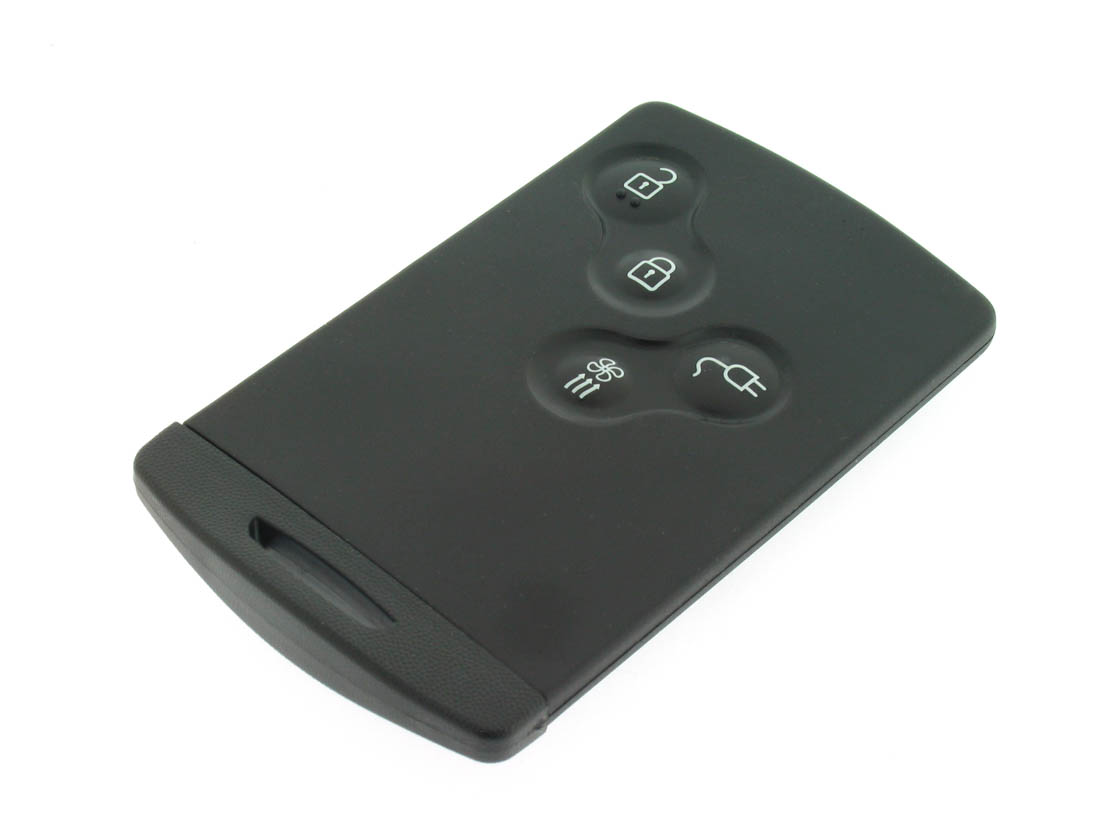
Despite being subjected to the same handling as regular keys, being dropped, sat on, and exposed to the elements, they lacked the robustness to withstand these everyday occurrences.
The plastic housing would crack, exposing the sensitive electronics inside, while the internal battery connections would loosen over time with normal handling.
When problems did occur, diagnosis and repair were notoriously difficult. The system provided minimal feedback about what specifically had failed, often displaying generic error messages that provided little guidance.
Dealer technicians frequently resorted to the costly solution of replacing the entire card and sometimes the dashboard reader unit as well, rather than being able to repair specific components.
Replacement costs added insult to injury for owners. New cards typically cost between €150-300 (approximately $175-350), require dealer programming, and often involve waiting periods as the specific card needed to be ordered from Renault.
This left many owners temporarily without transportation or forced to pay for rental vehicles while waiting for replacements. Later iterations of the system attempted to address these reliability issues, but the fundamental design remained problematic throughout its production run.
The Renault key card system stands as a prime example of how prioritizing innovation and distinctive design over proven reliability can result in a frustrating ownership experience with frequent, unexpected failures that leave drivers stranded.
3. Land Rover/Jaguar Smart Keys (2010-2017)
Jaguar Land Rover’s smart key systems from the early to mid-2010s developed a reputation for unreliability that stood in stark contrast to the premium positioning of these British luxury vehicles.
Models like the Range Rover Evoque, Land Rover Discovery Sport, and Jaguar XF from this era were equipped with key systems that frequently experienced failures, leaving owners stranded and facing expensive repairs.
A primary issue with these systems was their susceptibility to electronic interference and signal blocking. The communication between key and the vehicle relied on relatively narrow frequency bands that could be easily disrupted by other electronic devices or physical barriers.
Owners reported numerous instances where their vehicles wouldn’t recognize the key fob in certain locations or when other electronic devices were nearby.
The physical construction of these key fobs contributed significantly to their reliability issues. Internal components were inadequately secured, leading to disconnections when the fob was dropped or subjected to normal handling forces.
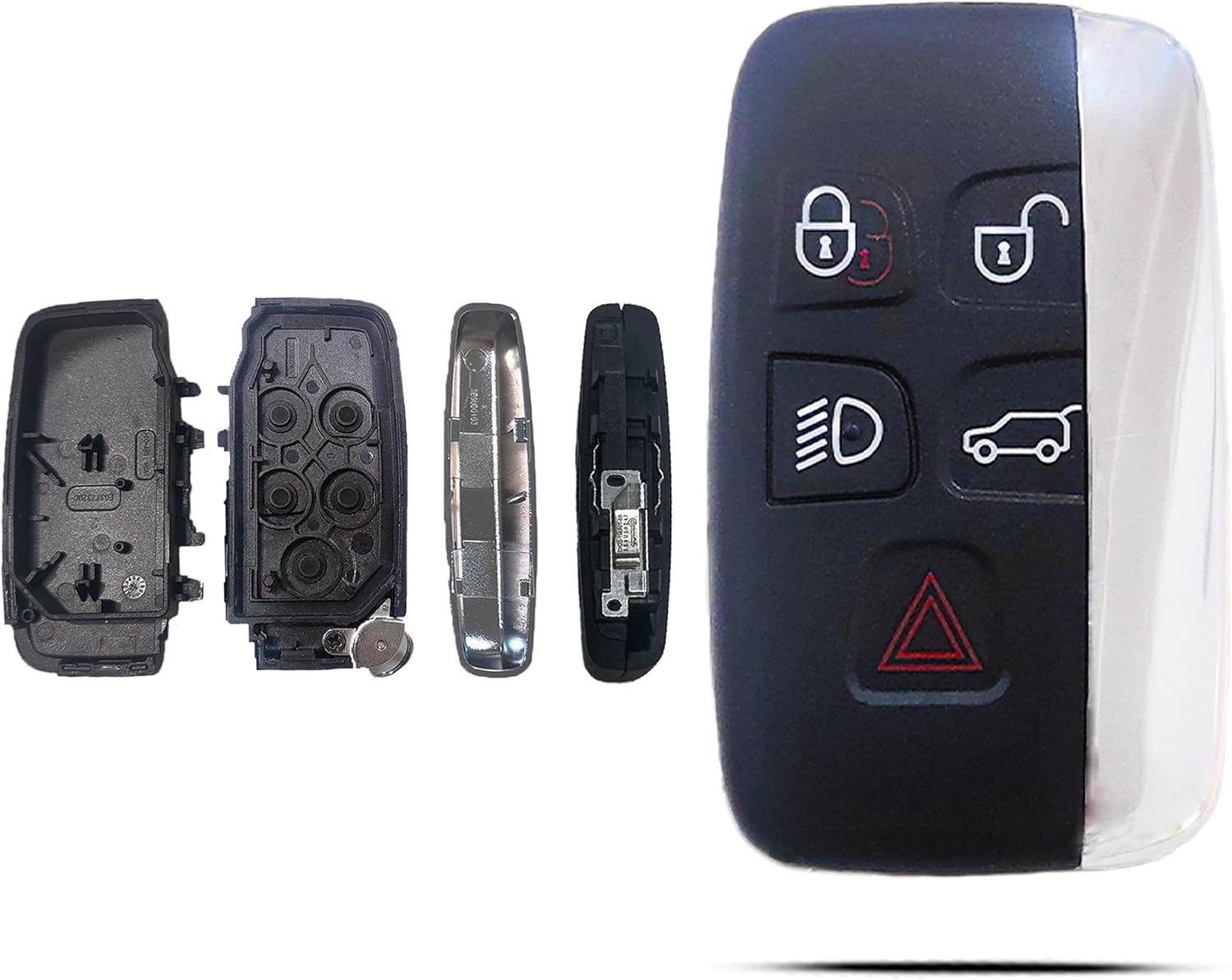
The battery contacts were particularly problematic, with a poor design that allowed them to lose connection over time, resulting in intermittent functionality that was difficult to diagnose.
Software problems compounded the hardware issues. The key fobs would occasionally desynchronize from the vehicle’s security system, requiring a complex and specific resynchronization procedure that many owners weren’t aware of or couldn’t perform without assistance.
This desynchronization could occur spontaneously, without any apparent trigger or warning. Water resistance was another notable weakness. Many owners reported key failure after minimal exposure to moisture from light rain to humid environments suggesting inadequate sealing of the electronic components.
Once moisture damaged the internal circuitry, the key would either fail or function unpredictably, sometimes working and sometimes not. The dealer experience when addressing these issues often exacerbated owner frustration.
Replacement keys were exceptionally expensive, typically costing $400-700 depending on the specific model and year. Programming these keys required specialized equipment only available at dealerships, creating a monopoly situation that prevented owners from seeking more affordable solutions from independent shops.
Perhaps most concerning was the lack of effective backup methods. While the key fobs contained emergency mechanical keys for door access, the electronic authentication required for starting the vehicle had few redundancies.
If the key’s electronics failed, owners were often left with no alternative but to have their vehicle towed to a dealership. JLR did attempt to address these issues in later models, but the 2010-2017 era key systems remain notorious among owners and mechanics alike for their unpredictable performance and tendency to leave drivers stranded with little warning.
4. Alfa Romeo Electronic Keys (2014-2019)
Alfa Romeo vehicles have long inspired passion among automotive enthusiasts for their distinctive styling and driving dynamics. Unfortunately, models from the mid-2010s like the Giulia and Stelvio inspired a different kind of passion, frustration with their notoriously unreliable key systems that frequently left owners stranded and seeking assistance.
The fundamental architecture of Alfa’s key system during this period suffered from both design and manufacturing quality issues. The electronic components were densely packed into a slim key fob with inadequate protection from physical stress and environmental factors.
This resulted in internal connections that could fail from normal handling, such as being carried in a pocket or dropped occasionally. Battery management was particularly problematic in these systems.
The key fobs consumed power at an unusually high rate, resulting in battery life as short as 3-6 months compared to the 1-2 years typical of other manufacturers.
Compounding this issue, the system provided minimal warning when the battery was nearing depletion, often resulting in sudden failures with no advance notice to the driver.
The communication protocols between the key and vehicle were also surprisingly fragile. The system used relatively simple encryption and authentication methods that could become corrupted after software updates to the vehicle or when the key experienced power interruptions.
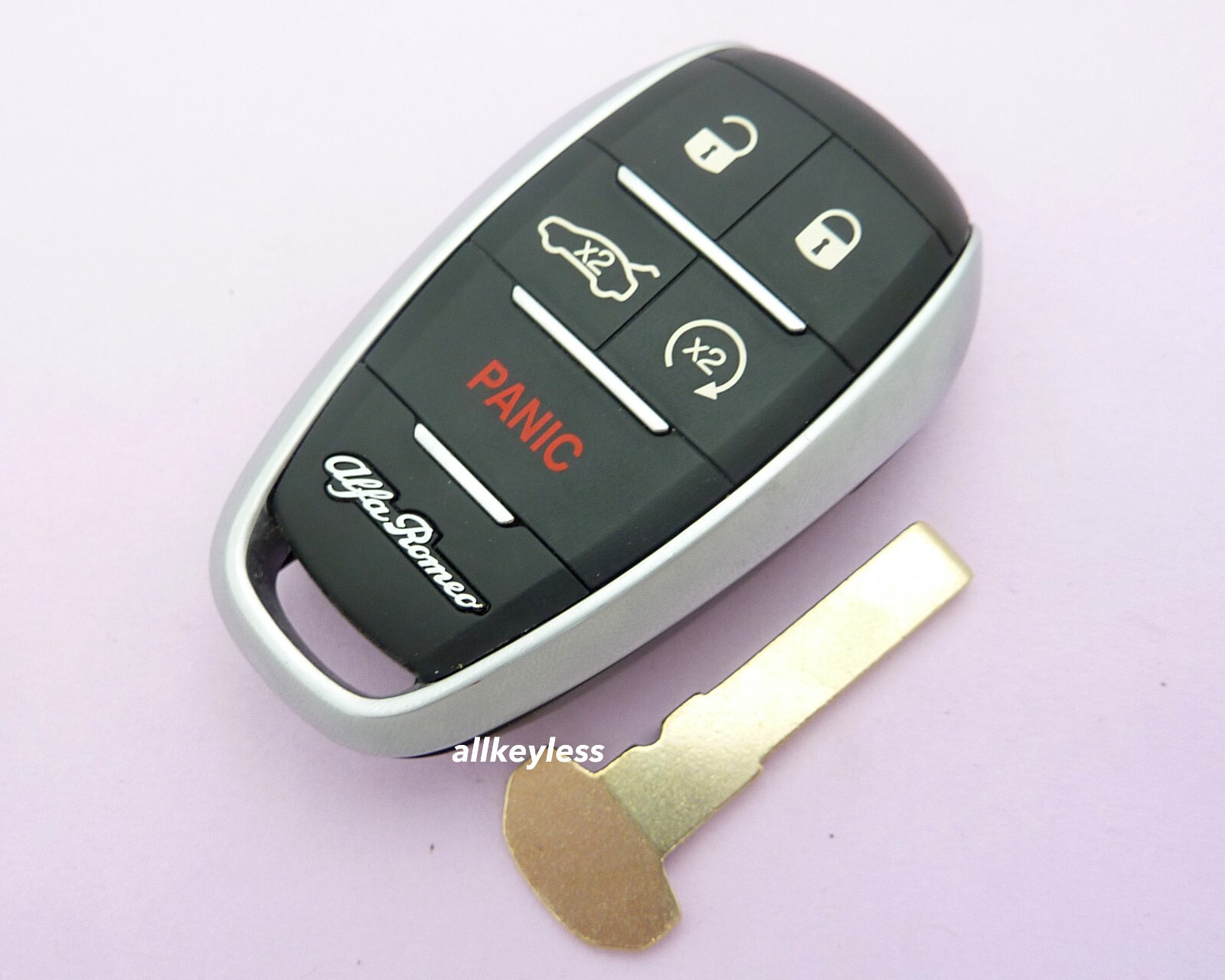
When this corruption occurred, the key would need complete reprogramming at a dealership rather than a simple battery replacement. Environmental sensitivity further compromised reliability.
Temperature extremes, both hot and col,d could cause the key’s electronic components to malfunction temporarily or permanently. Many owners reported keys failing during summer heat waves or winter cold snaps, periods when being stranded is particularly inconvenient and potentially dangerous.
When issues did arise, owners faced a frustrating service experience. Alfa Romeo dealerships are less common than those of mainstream brands, meaning longer travel distances for service.
Replacement keys often needed to be ordered from Italy, resulting in wait times of days or even weeks. Programming these keys required specific dealer equipment and could not be performed by most independent shops or locksmiths.
The cost of addressing these failures added a significant financial burden to ownership. Replacement key fobs typically cost between €300-400 (approximately $350-475) plus programming, with some owners reporting total costs exceeding $600 when dealership labor was included. For vehicles only a few years old, these expenses seemed particularly unreasonable to many owners.
While Alfa Romeo has worked to improve their key system reliability in newer models, the 2014-2019 generation remains notorious for leaving drivers stranded unexpectedly and creating significant ownership headaches that detracted from the otherwise enjoyable driving experience these vehicles provided.
5. Smartphone-Based Digital Key Systems (First Implementations)
The promise of using smartphones as car keys captured the imagination of both automakers and consumers alike, leading several manufacturers to rush early implementations to market between 2018 and 2022.
While the concept offered unprecedented convenience, these pioneering systems frequently left users stranded due to a perfect storm of technological limitations, software inconsistencies, and unrealistic expectations.
Unlike physical keys with dedicated hardware, smartphone-based systems depend on the owner’s consumer device, which is not specifically designed for automotive access.
This created numerous points of failure outside the car manufacturer’s control. Phone battery depletion, operating system updates, app crashes, and even normal phone restarts could all render the digital key temporarily or permanently inoperable.
Connectivity issues plagued these early systems. Most relied on Bluetooth Low Energy (BLE) or Near Field Communication (NFC) technologies, both of which can be disrupted by interference, physical obstructions, or even the way the phone is held.
Users frequently reported arriving at their vehicles only to find the digital key wouldn’t connect, with no clear explanation or troubleshooting method available.

Software compatibility created ongoing headaches as well. When phone manufacturers released operating system updates, these often broke compatibility with digital key applications until the automaker could release corresponding updates.
This left periods sometimes lasting weeks where owners couldn’t reliably use their digital keys and had to revert to physical backups if they had them.
Server dependencies introduced yet another vulnerability. Many early digital key implementations required communication with the manufacturer’s cloud servers for authentication or feature updates.
Server outages, network connectivity issues, or account problems could prevent vehicle access entirely, a problem never experienced with traditional keys.
The user experience often exacerbated these technical limitations. Most systems required multiple steps to activate the key function, unlocking the phone, opening a specific app, sometimes navigating to a particular screen, and then waiting for connection establishment.
This process could take 15-30 seconds compared to the instant operation of a physical key fob, creating frustration even when the system worked correctly. Perhaps most problematically, many early adopters weren’t adequately informed about carrying backup physical keys.
Some manufacturers marketed the phone-based system as a complete replacement rather than a supplement, leading to situations where owners had no fallback method when the digital system failed. Lockouts became common, requiring dealer assistance or emergency services.
While newer implementations have addressed many of these issues through improved protocols like Ultra-Wideband (UWB) technology and better offline authentication, the first generation of smartphone-based digital keys earned a well-deserved reputation for unreliability and frequently leaving users stranded at the most inconvenient moments.
Also Read: 5 Driver Seats That Support Long Trips And 5 That Leave You Sore

